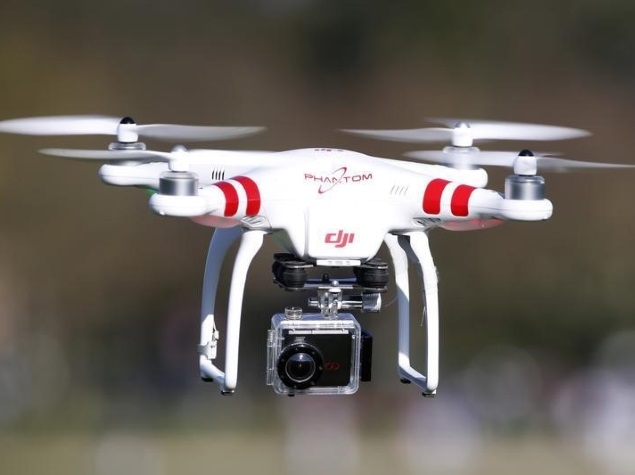- Home
- Others
- Others News
- New Autonomous Flying Drones Don't Require GPS to Navigate
New Autonomous Flying Drones Don't Require GPS to Navigate

With the goal of achieving autonomous flight of drones, Jose Martinez Carranza from the National Institute of Astrophysics, Optics and Electronics (INAOE) in Mexico, developed a vision and learning system to control and navigate them.
Martinez structured an innovative method to estimate the position and orientation of the vehicle, allowing it to recognise its environment, hence to replace the Global Positioning System (GPS) for low-cost sensors such as accelerometers, gyroscopes and camcorders.
The main idea was to avoid the use of GPS and use video cameras on board the vehicle for visual information and applying an algorithm to locate and orient the drone during its flight to use such information, researchers said.
To do this, a function that allows to draw a specific route on a map using aerial view was also adapted. Similar to Google Maps, it indicates autonomous navigation to a particular destination.
Researchers wanted to investigate different methods to perform autonomous flight of a drone on the outside environment where several challenges as wind currents occur and in areas where there is no GPS signal and have limited computational processing capabilities.
"At the stage of repeating, the pilot just makes the drone take off, but once in the air, autonomous flight algorithms kick into action and, by processing visual information captured by the camera, the vehicle recognises where in the environment it is positioned," said Martinez.
Once it has recognised its location, visual information estimates vehicle position, which is sent to the control algorithms, responsible for moving the drone, so that it navigates to each of the points made in the route recorded during the stage teaching.
Software for ground control station was also developed, where the visual transmission from the drone is received in real time.
This allows the inspection chamber in-charge to take photos or videos needed to detect fractures or flaws in structures.
Get your daily dose of tech news, reviews, and insights, in under 80 characters on Gadgets 360 Turbo. Connect with fellow tech lovers on our Forum. Follow us on X, Facebook, WhatsApp, Threads and Google News for instant updates. Catch all the action on our YouTube channel.
Related Stories
- Samsung Galaxy Unpacked 2025
- ChatGPT
- Redmi Note 14 Pro+
- iPhone 16
- Apple Vision Pro
- Oneplus 12
- OnePlus Nord CE 3 Lite 5G
- iPhone 13
- Xiaomi 14 Pro
- Oppo Find N3
- Tecno Spark Go (2023)
- Realme V30
- Best Phones Under 25000
- Samsung Galaxy S24 Series
- Cryptocurrency
- iQoo 12
- Samsung Galaxy S24 Ultra
- Giottus
- Samsung Galaxy Z Flip 5
- Apple 'Scary Fast'
- Housefull 5
- GoPro Hero 12 Black Review
- Invincible Season 2
- JioGlass
- HD Ready TV
- Laptop Under 50000
- Smartwatch Under 10000
- Latest Mobile Phones
- Compare Phones
- Vivo Y500 Pro
- Realme GT 8 Pro Aston Martin F1 Limited Edition
- Huawei Mate 70 Air
- Moto G57
- Moto G57 Power
- Motorola Edge 70
- Moto G Play (2026)
- Moto G (2026)
- MacBook Pro 14-inch (M5, 2025)
- Asus Vivobook S16 (S3607QA)
- iQOO Pad 5e
- OPPO Pad 5
- Noise Diva 2
- Noise Halo 2
- Acerpure Nitro Z Series 100-inch QLED TV
- Samsung 43 Inch LED Ultra HD (4K) Smart TV (UA43UE81AFULXL)
- Asus ROG Ally
- Nintendo Switch Lite
- Haier 1.6 Ton 5 Star Inverter Split AC (HSU19G-MZAID5BN-INV)
- Haier 1.6 Ton 5 Star Inverter Split AC (HSU19G-MZAIM5BN-INV)

















